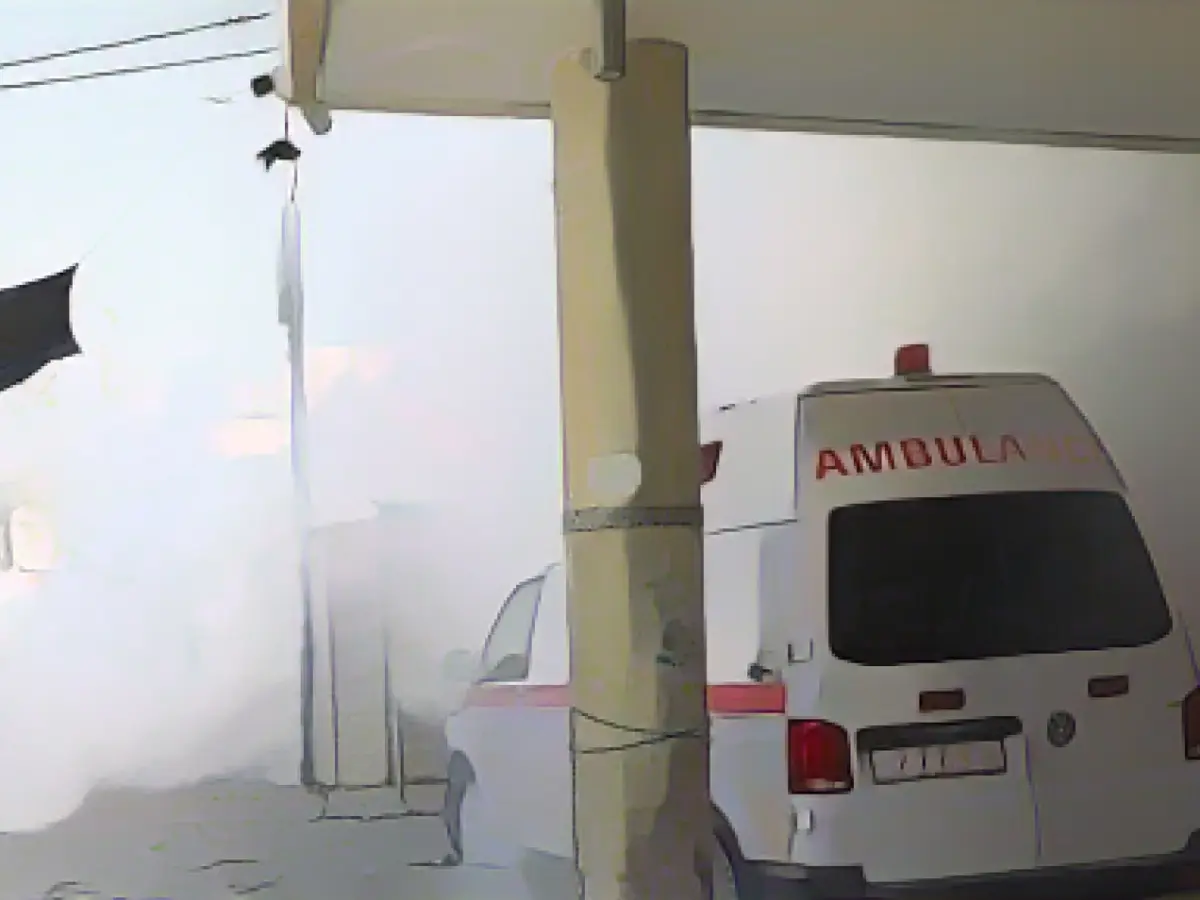In the heart of global diplomacy, the UN General Assembly is urging for an immediate halt to the hostilities in the Gaza Strip, amidst Israel's ongoing successes against the Islamist group Hamas. The pleas for a ceasefire echo in the corridors of power as civilians endure unbearable suffering, with various international bodies expressing deep concern.
Israel's military pressures have led to a notable shift among Hamas fighters. An increasing number of them are surrendering, as declared by Israel's Chief of Staff Herzi Halevi, whose words echo an apparent weakening of Hamas' fighting spirit. While the situation remains grim for civilians, their cries for relief resonate across the globe. The UN, having documented the destruction of around 18% of all buildings in Gaza since the conflict's onset, appeals for an end to this destructive cycle.
Meanwhile, the UN General Assembly voted in favor of an immediate humanitarian truce in Gaza, as a resolution introduced by Egypt garnered the necessary two-thirds majority in New York. Despite the consensus, the resolution didn't hold explicit reference to the Hamas atrocity in Israel, which hindered Germany from casting its vote in approval. The resolution, though symbolic in nature, can't be legally enforced. In an earlier attempt, a draft resolution aiming for an immediate ceasefire in the Gaza war had fallen through in the UN Security Council due to the USA's veto, since its resolutions carry binding power.
A prominent call for change reverberates across the international arena, as US President Joe Biden implores Israel's Prime Minister Benjamin Netanyahu to instigate a shift in the Israeli government. The aim is to achieve a long-term solution to the Israeli-Palestinian conflict. Netanyahu's current administration, recognized as the most conservative in Israel's history, lacks the desire for a two-state solution, highlighting the need for a transformation in Israel's governing body.
President Biden continued his support for Israel in the fight against Hamas terrorism while advocating for humanitarian aid for the innocent Palestinian civilians. The resolution for an immediate ceasefire in the Gaza Strip garnered international approval, with prominent figures such as French President Emmanuel Macron voicing unease over the escalating military tensions within the Middle East.
Amidst the turmoil, concerns grow over the deteriorating situation in the Gaza Strip, where the secluded coastal strip has become a battleground for survivors seeking safety. Philippe Lazzarini, the UNRWA Commissioner-General, shared his concerns after a visit to the area. The humanitarian crisis left half of the population starving, and their pleas for safety echoed around the globe.
Hospitals within the Gaza Strip have suffered extensive damage and scarcity of resources, with health care systems on the brink of collapse. The Al-Ahli hospital in Gaza City exemplifies this as it struggles to provide adequate care for the overwhelming influx of patients. With limited medical staff and facilities, doctors deal with over 200 patients and treat them in unconventional locations like corridors and libraries, showing how the conflict continues to impact the daily lives of innocent civilians.
In this challenging environment, the Al-Auda hospital in Jabalia has been under Israeli military siege and artillery fire for six consecutive days, leaving 250 medical staff, patients, and their families trapped within. As reported by the United Nations Emergency Relief Coordinator, OCHA, two medical staff members were killed and many more injured during the conflict.
The Kamal Aduan hospital in the northern Gaza Strip has also been affected, as Israeli troops raided the premises, ordering men, including medical staff, to gather in the courtyard. The Israeli military denied any involvement in the incident when questioned, while Palestinians claimed that the hospital had been under attack the previous day.
The Ministry of Health in the Gaza Strip announced the tragic death toll cumulating to 18,412 since the conflict began, with more than 50,000 others having sustained injuries. According to this report, this number surpassed the previous estimation of around 18,200 lives lost during the same period, exacerbating the fears and concerns over the devastating impact of the conflict on the region's vulnerable population.
Tracing back to the origins of this ongoing strife, the Gaza war commenced as a result of the worst massacre in Israel's history. Terrorist attacks from the Islamist Hamas and other extremist groups targeted civilians in Israel on October 7, causing over 1,200 casualties, including at least 850 civilians.
The Israeli army has reported 434 soldiers lost in this conflict, and 135 individuals are still believed to be held captive by Hamas and other extremist factions within the Gaza Strip, according to Israeli media sources. The fate of numerous hostages remains uncertain, adding another layer of complexity to this seemingly endless conflict.
The history of diplomatic efforts to bring an end to the conflict is a volatile one, with numerous ceasefire negotiations and calls for peace failing to quell the tension. With an uncertain future ahead and the worsening humanitarian crisis, the people of the region cling to hope for a peaceful resolution to the Israeli-Palestinian conflict, guided by the wisdom and compassion of international leaders.
Enrichment Data:
As of February 2025, the situation between Israel and Hamas in the Gaza Strip remains complex and volatile. Armed conflicts, ceasefire agreements, and humanitarian aid efforts mark the ongoing struggle between the two parties. Here is a summary of the current situation and international response:
Current Situation
- Ceasefire Agreement: A ceasefire and hostage release deal between Israel and Hamas came into effect on January 19, 2025. The first phase of the deal involves a six-week ceasefire, during which Hamas has committed to releasing 33 hostages, and Israel has committed to releasing 1,900 Palestinian prisoners and detainees[1][3].
- Humanitarian Aid: The ceasefire has allowed for a significant scaling up of humanitarian aid in Gaza, including to the north. However, there have been reports of ongoing Israeli military actions and humanitarian aid being hindered[1][3].
- Humanitarian Crisis: The conflict has resulted in a devastating humanitarian crisis. Over 1.9 million people (90% of Gaza’s population) were internally displaced, with most experiencing repeated or prolonged displacements. The health and water systems have nearly collapsed, and over 60% of homes and 65% of roads have been destroyed[3].
International Response
- UN Security Council Resolution 2735: Adopted on June 10, 2024, this resolution calls on Hamas to accept a proposed hostage and ceasefire agreement. It outlines a three-phase proposal, including an immediate ceasefire, the release of hostages, and a permanent end to hostilities. The resolution also rejects any demographic or territorial changes in the Gaza Strip and reaffirms the Security Council's support for a two-state solution[2].
- UN General Assembly's Call for Ceasefire: The UN General Assembly has repeatedly called for an immediate ceasefire in Gaza. The resolution emphasizes the importance of adhering to the terms of the ceasefire proposal and calls upon all Member States and the United Nations to support its implementation[2].
- Humanitarian Flash Appeal: On December 11, 2024, the United Nations issued a humanitarian flash appeal for the Occupied Palestinian Territory, requesting $6.6 billion to address critical humanitarian needs in Gaza. This appeal highlights the acute humanitarian needs, including protection of civilians, respect for international humanitarian law, and safe access to aid[3].
Impact on Civilians and Infrastructure
- Civilians: The conflict has resulted in significant civilian casualties, displacement, and suffering. Women and girls face heightened risks of gender-based violence, and medical care is woefully insufficient. The situation is exacerbated by the collapse of social support systems and unequal access to scarce resources[3].
- Infrastructure: The destruction of infrastructure has been extensive. Over 60% of homes and 65% of roads have been destroyed. The health and water systems have nearly collapsed, with the massive destruction of distribution networks and key facilities. Schools and hospitals have also been severely damaged, with only 37% of primary healthcare centers partially functional[3].
In summary, the ongoing conflict between Israel and Hamas in the Gaza Strip continues to pose a significant humanitarian crisis, with extensive destruction of infrastructure and severe impacts on civilians. The international community, particularly through the UN, has called for an immediate ceasefire and emphasized the need for humanitarian aid and respect for international humanitarian law.




